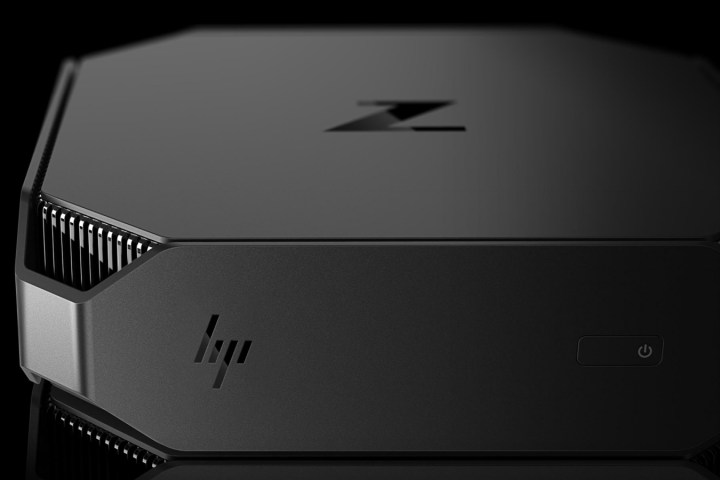
HP’s selling point outside the obvious form factor is that the Z2 Mini Workstation is an ideal solution for architects, engineers, and other professionals that rely on graphics-intensive computer-aided design (CAD) software. That means customers should expect high performance despite the console-like shape thanks to current and next-generation Intel processor options, and professional Quadro graphics supplied by Nvidia.
According to the company, the Z2 Mini Workstation is certified to run most of the popular CAD-oriented programs. It is backed by over “30 years of engineering,” and was tested to endure for 368,000 hours of non-stop use for building design and CGI creation. Here are the specs:
| Operating system options: | Windows 7 Professional (with Win 10 Pro upgrade) or Linux |
| Chipset: | Intel C236 |
| Processor options: | Intel Core /i3/i5/i7 Intel Xeon E3-1200v5 Series |
| Memory slots: | 2x SODIMM up to 32GB |
| Internal drive bay: | 1x 2.5-inch up to 1.5TB via SSD |
| Storage expansion slot: | 1x M.2 PCI Express Gen 3 slot |
| Graphics: | Nvidia Quadro M620 with 2GB VRAM |
| Dimensions: | 8.5 x 8.5 x 2.28 inches |
| Weight: | Starts at 4.5 pounds |
| Ports: | 1x gigabit Ethernet 4x USB 3.0 2x USB 3.1 Gen 1 Type-C 1x audio line 1x microphone/headphone jack 4x DisplayPort |
| Wireless connectivity: | Wireless AC (optional) Bluetooth (optional) |
| Security: | HP 10mm Keyed Cable Lock (optional) HP SureStart |
| Power supply: | 135 watts |
As the specs show, the mini workstation sports a Quadro M620 graphics chip. A look on Nvidia’s website did not pull up any results on this model at the time of this writing and HP’s own provided specs did not list the video output aspect. However, the company says the new mini workstation supports up to four displays natively and an additional two displays through a daisy chain.
In a pre-release press deck, an image reveals four DisplayPort connectors in the back along with the power jack and Ethernet port. Customers can install a special plate on the back that prevents end-users from accessing the two USB 3.0 and two USB 3.1 Type-C ports on the back, and the two additional USB 3.0 Type-A ports on the side. This is the same slideshow that provided the press with some of the hardware details listed above that were not in Tuesday’s announcement.
In another pre-announcement slide, HP revealed the hardware layout customers will see when removing the tool-free top lid. The graphics chip is located on the left side of the unit and cooled with its own fan. To the right sits the workstation’s processor cooled by a fan/CPU heatsink combo. Remove that and users gain access to the memory slots underneath for an easy upgrade. The HDD/SSD resides on top of the graphic chip but shifted toward the back and away from the GPU cooling fan.
“HP engineers created custom designed fans and a cooling system for whisper-quiet acoustics (63 percent quieter than an HP business-class mini PC) for workstation customers that need mission-critical reliability,” the company said on Tuesday. “The HP Z2 Mini design and engineering ingenuity will transform the way people think about workstations and workspaces.”
Finally, the workstation will come with Vesa mounting support for placing it on the back of screens, under the desk, and so on. HP will officially launch the Z2 Mini Workstation in December with a starting price of $700. Naturally, there will be a number of configurations to choose from, meeting the individual needs of professionals seeking a small, yet powerful, CAD-focused solution.


